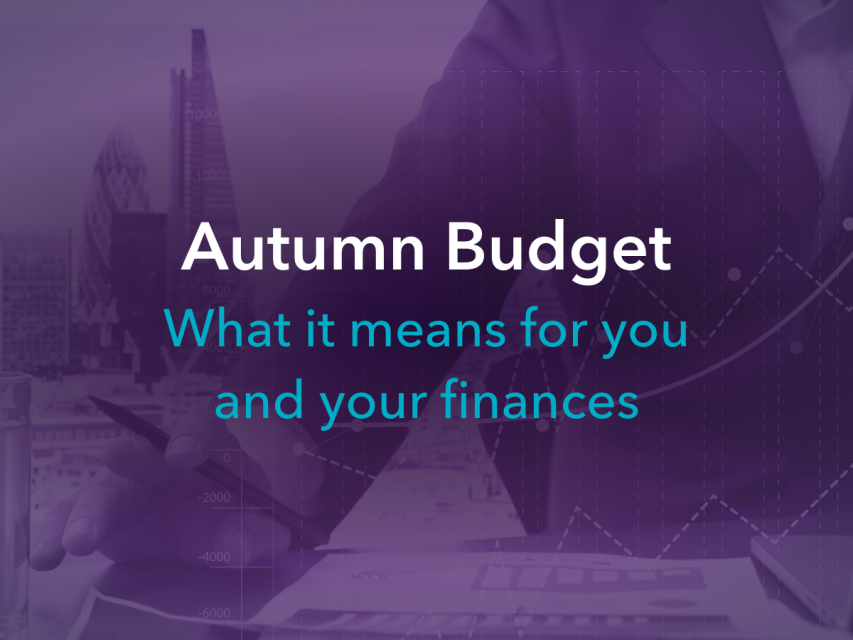The UK signs trade deals with India, the US and the EU
In May, the UK government signed trade agreements with India, the US, and the EU. These agreements are intended to enhance trade cooperation and market access. According to some industry analysts, these developments may signal continued global trade integration and the UK’s efforts to establish a more flexible international trading position post-Brexit.
The first deal was the one struck with India: the UK-India Free Trade Agreement. Essentially, this makes it easier for the two countries to buy and sell goods with one another. The hope is that this will boost both economies. For the UK, the deal is projected to boost the economy by £4.8 billion by 2040.1
The UK has lowered taxes on goods imported from India: these include clothing and footwear, food products, jewellery and some cars. Meanwhile, India has cut taxes on UK goods, including cosmetics, higher-value cars, medical devices, electrical machinery and certain foods and beverages. Given the size of the Indian market, this could be a big win for UK businesses that make the goods on which tariffs have been slashed. Car-makers are a case in point, as are drinks producers: tariffs on gin and whisky are to be first halved and then reduced further.
On the other side, the reduced tariffs on clothes, jewellery and frozen prawns, among other goods, could lead to lower prices and greater choice for UK consumers.
The deal also offers the potential to boost UK employment and tax receipts. If British businesses end up exporting more goods to India and making higher profits, they’re likely to hire more staff, invest more in their facilities and, ultimately, pay more tax. The government expects a boost to British wages of £2.2 billion a year over the long term.2
The Indian deal was soon followed by the UK-US Economic Prosperity Deal. Coming in the wake of the ‘Liberation Day’ tariff announcements, this deal was more limited in scope than the Indian agreement and focused on reducing some of the tariffs that the US had earlier imposed on the UK. All in all, tariffs on UK goods imported into the US will still be higher than they were at the start of the year.
Nevertheless, the removal of tariffs3 on UK steel and aluminium is very welcome, as is the reduction of tariffs on car imports from 27.5% to 10%.3 Researchers estimate that the deal more than halves the damage to the UK economy from the Trump tariffs.13 Additionally, it acts as a starting point for further negotiations, with the possibility of further tariff reductions in future.
The new UK-EU deal is the most significant of the three. It addresses the slump in trade between the UK and EU in the post-Brexit years by removing barriers to trade in a number of areas. As a concession to Europe, the UK is extending EU fishing boats’ access4 to British waters until 2038. In return, the UK will be able to sell food to Europe with greatly reduced checks – which have been entirely eliminated in many cases. There are also tariff exemptions5 for British steel exports. And emissions trading is covered too, with UK businesses avoiding the EU’s new carbon tax. In total, the deal is expected to boost the British economy by almost £9 billion over the next 15 years.6
The deal goes beyond trade too. It also covers cooperation on crime and defence. And – in perhaps the most obvious fillip for British travellers – UK passport holders will be able to use a wider range of e-gates7 at European airports, thus avoiding the queues that have plagued post-Brexit holidaymakers.
The Bank of England cuts rates again
On 8 May, the Bank of England (BoE) cut its benchmark interest rate8 from 4.5% to 4.25%. This is the fourth rate cut in the current cutting cycle, which began last August. Andrew Bailey, the BoE’s governor, hinted that more cuts could follow in the coming months.
As Bailey acknowledged, a major factor in the rate cut was the torrent of tariffs unleashed by the Trump administration in the US.9 In fact, the BoE’s Monetary Policy Committee considered a bigger cut than a mere 25 basis points, given concerns that the Trump trade war could hit the UK economy hard. Another consideration was that the eye-watering tariffs the US has imposed on China are likely to lead to a flood of cheap Chinese goods – originally bound for the US – into other markets, including the UK. This could have a strong disinflationary effect, giving the BoE further scope for cutting rates.
Over recent years, the high level of UK interest rates has significantly curtailed the cash people have in their pockets. Essentially, all of us have had to pay more for things like mortgages and credit cards. But mortgage rates have already been edging down in recent months, mainly because the markets and lenders expect further rate cuts this year.
The BoE’s most recent rate cut is good news for the 1.13 million homeowners on standard-variable-rate (SVR) mortgages, where the rate moves up and down at the lender’s discretion, and tracker deals, which typically follow the BoE’s base rate. According to UK Finance, the cut will save the average holder of a tracker mortgage £29 a month.10
Those approaching retirement may want to pay close attention to annuity rates. These are tied to long-term interest rates and government bond yields. Annuities offer guaranteed lifetime income and have been at record highs recently. But the downward trend in rates means that bond yields and the payout from annuities are likely to decline in future. For this reason, one option to consider is locking in an annuity now, while rates are still fairly high.
So, with Bank Rate down to 4.25%, how does the UK compare with the rest of the world? The lowest interest rates11 on offer are to be found in Switzerland and Fiji, both of which currently have base rates of 0.25%.
Meanwhile, Venezuela and Turkey are at the opposite end of the scale, with base rates12 of 59.4% and 46.0%, respectively. In both cases, these countries’ central banks are responding to sky-high inflation and declining currencies.
But the more obvious comparisons are with the US and Europe. In both, policy interest rates are forecast to continue to decrease gradually over the next few years. This follows the exceptional rate rises that central banks imposed to fight the soaring inflation that set in between 2021 and 2023.
Trump’s tariffs take their toll
And finally, we come to tariffs. These have dominated the headlines since the US ‘Liberation Day’ of 2 April caused global shockwaves. The tariffs imposed on a wide range of countries and commodities were far more stringent than most had expected, and they have had a sizeable impact on asset markets and economic forecasts.
The big takeaway from the tariffs is that they are economically damaging for the US in the short term without offering any substantial long-term gain. They are widely perceived as having increased the risk of a global recession as trade networks convulse and businesses scramble to adapt.
Particularly damaging has been the tit-for-tat tariff escalation with China. The trade war between the world’s two largest economies led to US tariffs of 145%14 on Chinese goods by 9 April; China responded by taking its tariff rate to 125% in some cases. Jay Powell, the Federal Reserve (Fed) chairman, said that tariffs would drive up consumer prices and risk unemployment15 in the US. Powell cited the tariff-driven uncertainty for the Fed’s decision to keep interest rates on hold – prompting furious responses from President Trump.
This situation looked unsustainable, and so it proved. After the turbulence in the markets caused by ‘Liberation Day’, the US administration paused most of the scheduled country-specific tariffs for 90 days,16 until mid-July, although the 10% global tariff remained in place. China was not included in the pause, but in early May, a de-escalation was agreed, with Chinese tariffs dropping back to 10% and US levies down to 30%, again for 90 days.
This de-escalation represents just a temporary truce. Businesses have no certainty beyond the summer, and a great deal of damage to trade has already been done. Measures of business and consumer sentiment have plunged, and until some lasting stability is achieved in trade, the outlook will remain unclear.
Sources
[1] UK concludes trade deal with India – GOV.UK (UK government press release: UK concludes trade deal with India)
[2] UK concludes trade deal with India – GOV.UK (UK government press release: UK concludes trade deal with India)
[3] https://www.gov.uk/government/news/landmark-economic-deal-with-united-states-saves-thousands-of-jobs-for-british-car-makers-and-steel-industry
[4] https://www.bbc.co.uk/news/articles/czdy3r6q9mgo
[5] https://www.uksteel.org/steel-news-2025/uk-and-eu-steel-carbon-markets-link-and-improved-trade-better-access-to-uk-s-biggest-steel-export-market
[6] PM secures new agreement with EU to benefit British people – GOV.UK (UK government press release: PM secures new agreement with EU to benefit British people)
[7] https://www.gov.uk/government/news/pm-secures-new-agreement-with-eu-to-benefit-british-people
[8] https://www.bankofengland.co.uk/monetary-policy-summary-and-minutes/2025/may-2025
[9] UK economy faces growth shock from Trump tariffs, says Bank governor | Andrew Bailey | The Guardian (The Guardian, UK economy)
[10] Bank lowers interest rates to 4.25% and hints at more to come (BBC News, 8 May 2005)
[11] https://businessday.ng/news/article/top-10-countries-with-lowest-interest-rates-for-business-investment-in-2025/
[12] https://tradingeconomics.com/country-list/interest-rate?continent=world
[13] Revealed: How much the US-UK trade deal will save UK economy from Trump tariffs | The Independent (The Independent, Revealed: How much the US-UK trade deal will save UK economy from Trump tariffs, 17 May 2025)
[14] https://www.bbc.co.uk/news/articles/cn93e12rypgo
[15] https://www.bbc.co.uk/news/articles/cglxldgx0l5o
[16] https://www.theguardian.com/us-news/2025/apr/09/trump-tariffs-list-pause






